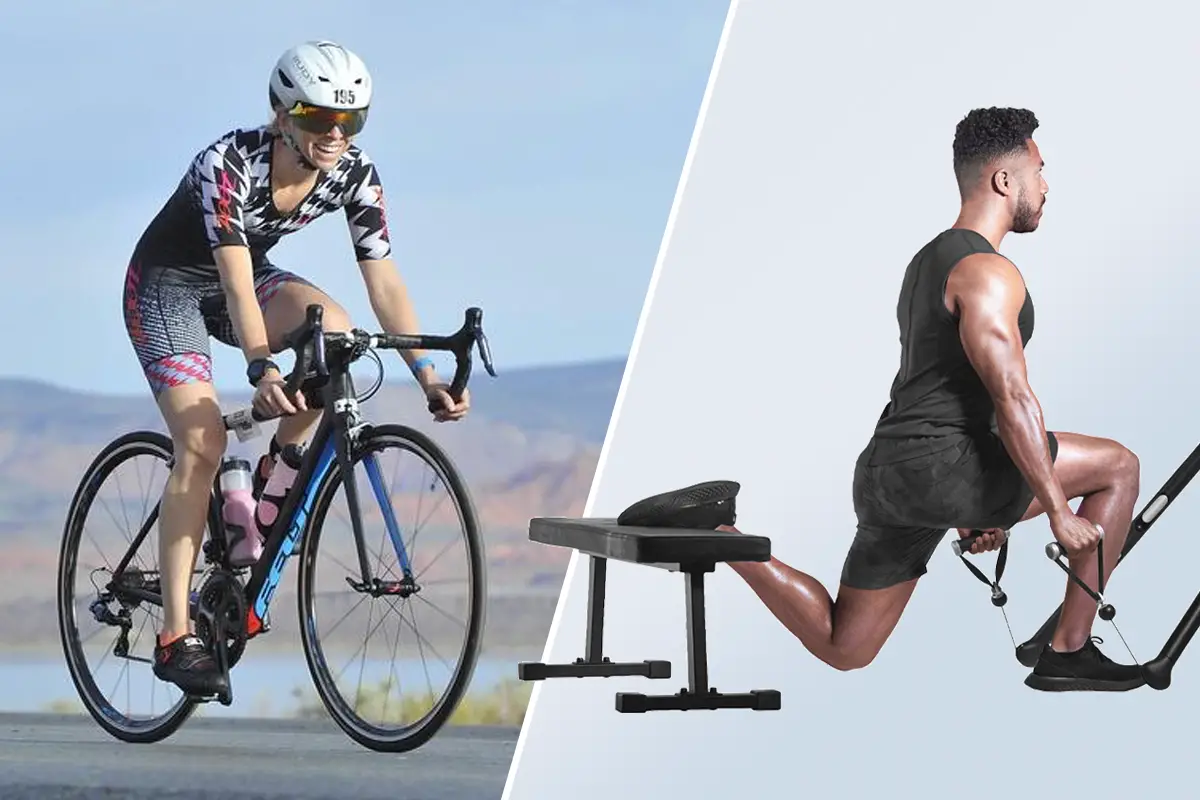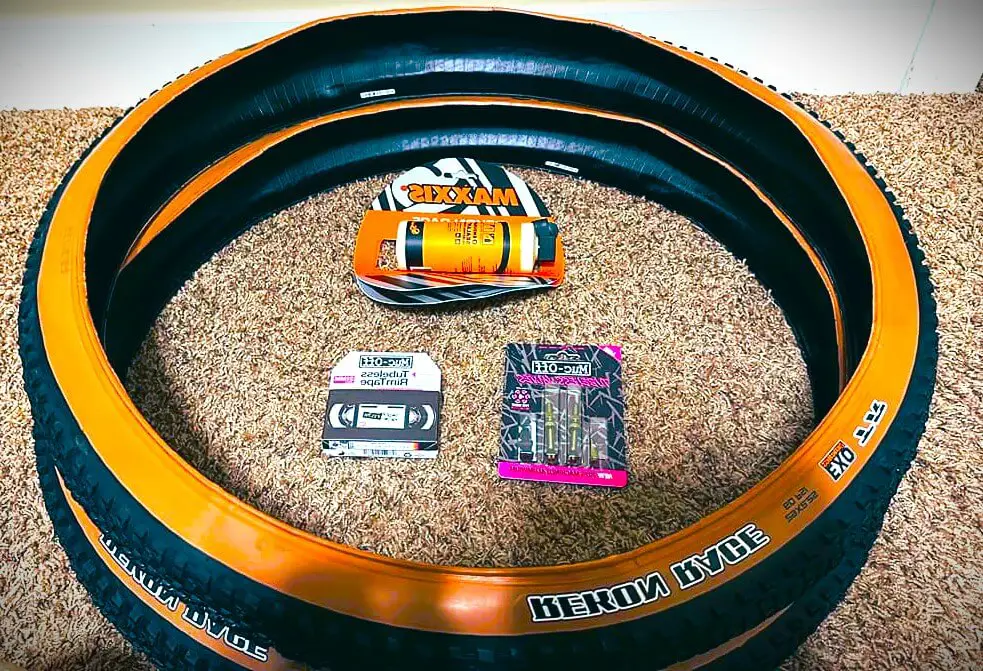The Difference between Fat Bike vs Road Bike In 2024: Which One You Should Choose?

As an affiliate, we may earn from qualifying purchases. We get commissions for purchases made through links on this website. You can read more on our Affiliate Disclaimer here.
When you plan to get your first bike, one question will always be in front of you. Should you pick regular road bikes or fat bikes? Since these questions have no direct answer, people search Google, “ Fat bike vs road bike, which one is better?”
Well, the better usability of the bike will depend on your riding nature and requirements. Usually, road bikes, with their narrow tires and sleeker design, are meant to ride on regular roads, pavements, and a little bit of off-roading. On the contrary, fat bikes with fatty tires are suitable for sandy and snowy surfaces, especially during the wintertime.
Moreover, speed lovers should go for road bikes because their thinner tires increase speed. On the contrary, fat bikes have less speed due to the thicker tires, but it has improved traction. So, it is less likely to slip on tough terrains.
Now, let’s take this discussion deep to let you know which bike you should choose. Also, we will suggest you top fat bikes and road bikes.
What Is A Fat Bike?
The term fat bike may be unknown to many people, especially if you are new in the biking sector. So, what is a fat bike in reality?
As the name suggests, fat bikes refer to bikes that have usual than wider tires. The oversized tires of the fat bikes are designed mainly for off-road riding and better traction to prevent slips. These bikes are also known as fat-tire bikes and snow bikes.
The tire size will usually be 3.8 inches (97mm) or even larger. The rims will typically be 2.16 inches (55). Both the rim and tire size is larger than the typical road bikes.
The fat bikes are also pretty new in the biking sector. Yes, the earliest history of fat tire bikes can be traced back to the 1900s. However, modern-day and road-rideable fat bikes were seen in industrial manufacturing in the late 1980s. Since then, trekkers and snowboarders have gone crazy about the fat bikes.
What Is A Road Bike?
Road bikes are the most common bikes on the roads and pavements. These bikes have thinner tires and are meant for speedy rides. Also, the sleek profile and better aerodynamics made the road bikes an immediate choice for city dwellers.
Road bikes have become a popular choice for daily commuting among most people, thanks to their improved speed and profile. The tires are thinner, but they operate at higher pressure, usually at 100PSI. The increased air pressure helps the bikes to glide smoothly on the pavements and asphalt roads. Also, the handlebar has a slightly dropped design. So, the rider has to lean forward to ride the road bikes that further improve their speedy performance.
Fat Bike Vs Road Bike: Which Is Better?
Now that we know the definition of road bikes, it’s time to see which bike is better for you. However, this question has no straightforward answer. So, we will look at the advantages and disadvantages of road bikes and fat bikes. Also, we will compare their speed, riding smoothness, comfort, and usability in different situations to give you the verdict.
Fat Bike vs Road Bike Speed Comparison:
As a biker, your primary concern would be the bike’s speed. In this regard, road bikes will always stay ahead of fat-tire bikes. Also, with their thinner profile and slimmer tires, the road bikes offer excellent riding speed on the pavement.
On top of it, road bikes are slightly more lightweight than fat bikes. Thus, you can reach the top speed of the road bikes with ease. Furthermore, the lightweight design will be useful to boost your riding comfort and smoothness without putting too much strain on your body.
On the contrary, fat-tire bikes with fatter tires, heavier profiles, and enhanced traction will be slower than road bikes. Thus, you might not find the fat bikes useful for daily commuting since you will fail to reach the speed you want. Also, it will drain your energy more than road bikes so, isn’t ideal for daily commuters who would choose bicycles to go to their office and vice-versa.
Simply, Fat bikes have upright geometry, tires wider than 2 inches, and flat bars (and are heavy AF). Road bikes are extremely lightweight, with racy geometry and drop bars. That’s it!
Pedaling Comfort: Fat Bike vs Road Bike
One of the key selection points of bikes is the comfort or difficulty you will face while pedaling the bicycle. So, which bike is easy to pedal?
The obvious answer will be road bikes. Road bike offers the easiest pedals thanks to their less traction in the tires, thinner tires, and lightweight design. You won’t have to sweat even after pedaling the road bikes for miles.
On the contrary, most riders will agree that fat tire bikes are incredibly challenging to pedal. The increased traction and thicker tires mean you will need more physical power to pedal the fat tire bikes even on the pavements. So, you will feel tired sooner with the fat bikes than the road bikes.
Riding on Different Terrains: Fat bike vs Road bike Comparison
Road bikes are mainly designed for smooth pavements. So, you will find these bikes widely in cities as people use them daily as commuters. The road bikes easily pass through the pavements and may offer a bit of off-road riding too.
Nonetheless, the off-road performance of the road bikes isn’t pretty appreciable. You may choose these bikes for occasional off-road adventures. Also, the lack of proper suspension means you will feel bumpier with the road bikes.
On the contrary, fat bikes can ride through a plethora of different and challenging terrains. It includes:
- Snow
- Mud
- Swamps
- Bogs
- Sandy trails & beaches
You may even choose the fat bikes for different mountain bike trails. Also, their improved traction means you will ride through the snowy and muddy terrains safer and better with the fat-tire bikes. The road bikes fall far behind when riding on different terrains.
If you are a trekker, hiker, or adventure lover, your choice should always be fat bikes. On the contrary, office goers and daily commuters will find the road bike preferable.
Consider the Pricing and Maintenance of Road bikes and Fat bikes:
It would help if you also considered the road and fat-tire bikes’ pricing before choosing one. Earlier fat bikes were way more expensive than road bikes. Thankfully, the price of road bikes has reduced quite considerably in the past few years.
Nonetheless, fat bikes are still among the most expensive bikes. A low-budget fat tire bike will cost you $250-$300. However, you will get most fat bikes priced well over $500, which can be truly expensive for beginners.
On the contrary, you can get a good-quality road bike for $250. There are many good quality and high-performing road bikes available for well below $5000. So, beginners will find them incredibly budget-friendly.
Last but not least, road bikes need less maintenance than fat bikes. Even the tire replacement cost of the fat bikes can overwhelm you. And sadly, you can’t choose the regular tires for them either.
Budget-friendly Road bike and Fat bike suggestions:
If you are a beginner and want a quality bike at a good price, you need to be cautious. Both road bikes and fat bikes aren’t cheap options. So, we have researched to find the top road and fat bikes within your budget.
- The Vilano Shadow 3.0 Road Bike comes well under budget. The bike offers more features than a standard road bike in this price range. The aluminum frame is lightweight, and its 700cc tires combine with the integrated brake shift for maximum riding comfort.
- The Mongoose Dolomite Men’s Fat Tire Mountain Bike is priced and goes up and down. However, it delivers excellent performance even in this price ratio. Its steel frame ensures maximum longevity and the dual-disc brakes provide better safety and riding comfort.
You may look at those bikes to begin your cycling career. Both bikes offer superior performance and riding smoothness that you will surely appreciate.
Advantages of road bikes:
- Road bikes are famous for their speedy riding experience.
- Road bikes offer better efficiency than any other bike.
- The lightweight design offers better riding comfort for riders.
- The road bikes are available for touring, sports, and racing modes.
- You will find road bikes at nearly every price point.
Advantages of fat bikes:
- Fat bikes are an ideal choice for off-road riding and adventures.
- Fat bikes offer better safety with improved tractions.
- You will get more versatility with the fat tire bikes in different terrains.
- These bikes let you ride comfortably on snow, mud, sand, and other surfaces.
- You will find these bikes better for strengthening your muscles.
Final Words
As the discussion between fat bike vs. road bike suggests, there’s no clear winner. The purchasing decision will depend on your riding requirements and budget. If you want a bicycle for riding on city streets daily, go with the road bike. On the contrary, fat bikes are preferable for adventure lovers and those who go off-road riding often.
Lastly, people with a tight budget may find road bikes more suitable than fat-tire bikes.

Steven is a professional cyclist and his passion is cycling. He has been cycling for the last 6 years and he loves using bikes while outing as well. Based on his experiences with the different types of bikes; he is sharing his opinions about various bikes so that a beginner can start right away. Find him on Twitter @thecyclistguy Happy Biking.




